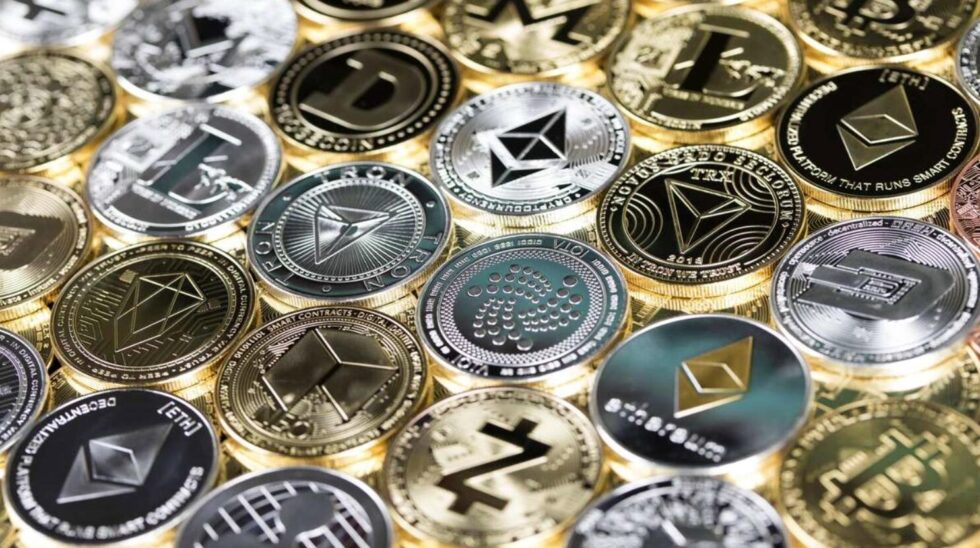Global Crypto Exchange Ranking 2025: Detailed Insights

Cryptocurrency exchanges have become the backbone of the digital economy. They are the main entry point for millions of traders and investors worldwide, enabling the purchase, sale, storage, and trading of digital assets. Over the past decade, exchanges have grown from small niche projects into global financial hubs with billions of dollars in daily trading volume, reports the editorial team at G.business.
The market is now highly competitive, and each platform aims to stand out by offering unique features — whether it is stronger regulation, a wider choice of coins, or innovative tools for professionals. In this article, we will analyze the top crypto exchanges in the world, address myths, provide factual comparisons, and highlight what makes each platform unique.
Common Myths About Crypto Exchanges
The crypto space is surrounded by myths, and exchanges are no exception. One of the most common misconceptions is that all exchanges are unsafe and prone to hacks. While security breaches have indeed occurred in the past, today’s leading platforms employ multi-layered protection systems, including cold storage, two-factor authentication, and advanced monitoring tools.
Another frequent myth is that exchanges guarantee full anonymity. In reality, most top-tier platforms comply with strict KYC (Know Your Customer) and AML (Anti-Money Laundering) policies. This means identity verification is mandatory, and transactions are monitored. While blockchain itself offers transparency, exchanges must align with global regulations.
Why Misconceptions Persist
Despite improvements, negative stories tend to dominate headlines. Failures such as FTX or Mt.Gox left a deep mark on public perception. People often remember scandals but overlook the fact that top exchanges process billions in secure transactions daily. Social media amplifies this effect, spreading rumors faster than factual reports. As a result, myths persist even when reality paints a much more stable picture of the industry.
Reality: The World’s Leading Crypto Exchanges
The reality of the crypto industry is more structured than myths suggest. Leading exchanges offer not only trading but also staking, lending, derivatives, and NFT marketplaces. They are gradually transforming into complete financial ecosystems, combining traditional finance with decentralized innovation.
When evaluating exchanges, experts look at trading volume, liquidity, available cryptocurrencies, regulations, security measures, customer service, and technological innovation. A ranking must consider all these elements to provide a fair assessment.
Top Global Crypto Exchanges in 2025
| Exchange | Daily Trading Volume | Available Coins | Regulation | Key Features |
|---|---|---|---|---|
| Binance | $65B | 350+ | EU, Asia | Massive liquidity, derivatives |
| Coinbase | $12B | 250+ | USA, EU | User-friendly, strong licenses |
| Kraken | $8B | 220+ | USA, Japan | Security, staking |
| KuCoin | $5B | 600+ | Limited | Wide altcoin selection |
| Bybit | $4B | 400+ | Limited | Derivatives, margin trading |
The table shows Binance’s absolute dominance in terms of trading volume and liquidity. Coinbase and Kraken stand out due to strict compliance and user trust, making them attractive to institutional players. KuCoin caters to altcoin enthusiasts with its massive selection, while Bybit specializes in advanced derivatives trading. Each exchange has a unique value proposition that suits different types of investors.
Regulation as a Trust Factor
Regulation plays a central role in building trust. Exchanges registered in the EU or USA must comply with strict rules, which not only protect retail users but also attract institutional investors. Compliance ensures transparency, financial reporting, and higher security standards. In contrast, unregulated exchanges may offer more freedom but also expose users to higher risks.
Detailed Breakdown of Major Crypto Exchanges
To better understand the specifics of each exchange, let’s examine them individually. Each platform has its own history, strengths, and weaknesses, which shape its reputation among traders. Some exchanges focus on strict compliance and regulations, while others attract users with innovative tools and lower fees. By analyzing them separately, we can see how different strategies meet the needs of both retail and institutional investors. This breakdown will also highlight which platforms are better suited for beginners, and which are designed for professional traders seeking advanced features. Understanding these distinctions is crucial for making informed decisions in such a competitive and rapidly evolving market.
Binance
Binance is the undisputed leader in the crypto world. With billions in daily trading volume, it offers unmatched liquidity. The platform supports over 350 cryptocurrencies and provides derivatives, staking, futures, and NFT marketplaces. Binance has faced regulatory challenges in the past, but it continues to expand globally while securing new licenses. Its competitive fees and advanced tools make it attractive for both beginners and professionals.
Coinbase
Coinbase is one of the most regulated and transparent exchanges. Headquartered in the United States, it is publicly listed on NASDAQ, which significantly boosts user trust. Coinbase is especially popular among beginners due to its clean interface and educational resources. While its fees are slightly higher than competitors, its compliance and insurance policies make it one of the safest platforms for long-term investors.
Kraken
Kraken has built its reputation on security and transparency. Operating since 2011, it has never suffered a major hack. It supports over 220 coins and provides services such as futures trading and staking. Kraken also emphasizes regulatory compliance and has licenses in both the USA and Japan. Its robust security measures make it a top choice for users who prioritize asset protection over low fees.
KuCoin
KuCoin is known as the "People’s Exchange" because of its wide selection of over 600 cryptocurrencies, including emerging altcoins. This makes it highly attractive for investors looking to diversify into lesser-known projects. However, KuCoin operates with limited regulatory oversight, which may pose risks for some users. On the other hand, its competitive fees and active community contribute to its global popularity.
Bybit
Bybit has rapidly grown due to its focus on derivatives and leveraged trading. It provides advanced tools for professional traders, including perpetual contracts and margin trading. While Bybit offers lower fees and high-speed execution, it is less regulated compared to Coinbase or Kraken. Nevertheless, it has gained a strong reputation for reliability and customer support, particularly in the derivatives segment.

Practical Tips for Choosing the Right Exchange
Choosing the right crypto exchange depends on your goals. For long-term investors, regulation and security should come first. Active traders may prioritize liquidity, fees, and advanced tools. Beginners, on the other hand, benefit most from user-friendly interfaces and strong customer support.
Checklist for evaluating an exchange:
- Liquidity and daily trading volume.
- Security measures (cold storage, 2FA, insurance).
- Regulatory compliance and licenses.
- Fees for deposits, withdrawals, and trades.
- Customer support availability.
A balanced approach helps avoid costly mistakes. For example, a platform with low fees may not be ideal if withdrawal times are excessively long. Similarly, high liquidity without proper security exposes users to unnecessary risks. Considering all factors together ensures safer and more effective trading.
Innovation and Customer Service
Beyond basic features, innovation is becoming a key competitive factor. Exchanges now integrate AI-driven trading bots, DeFi solutions, and NFT marketplaces. Equally important is customer service: quick responses to technical issues can save traders from losses. The best exchanges combine technological innovation with strong human support, ensuring a smooth user experience.
The Future of Crypto Exchange Rankings
Crypto exchanges are the foundation of the digital asset industry. Their evolution shows a clear trend toward greater regulation, transparency, and user protection. While myths about insecurity still exist, the reality demonstrates that the industry is becoming increasingly professional and trustworthy.
For traders and investors, the lesson is clear: do not rely on myths or advertising alone. Instead, analyze objective metrics such as liquidity, regulation, security, and reputation. Each exchange has strengths tailored to specific needs, and understanding these differences ensures better decisions.
In the coming years, competition among exchanges will intensify, leading to even higher quality services and improved user protection. The global ranking of crypto exchanges will continue to shift, but the industry as a whole is moving toward maturity and stability.
Latest events in politics and global economy at Cryptonews – practical tips on how to act and invest. Read: How to Pay with Cryptocurrency via a Crypto Wallet: Tips and Examples.